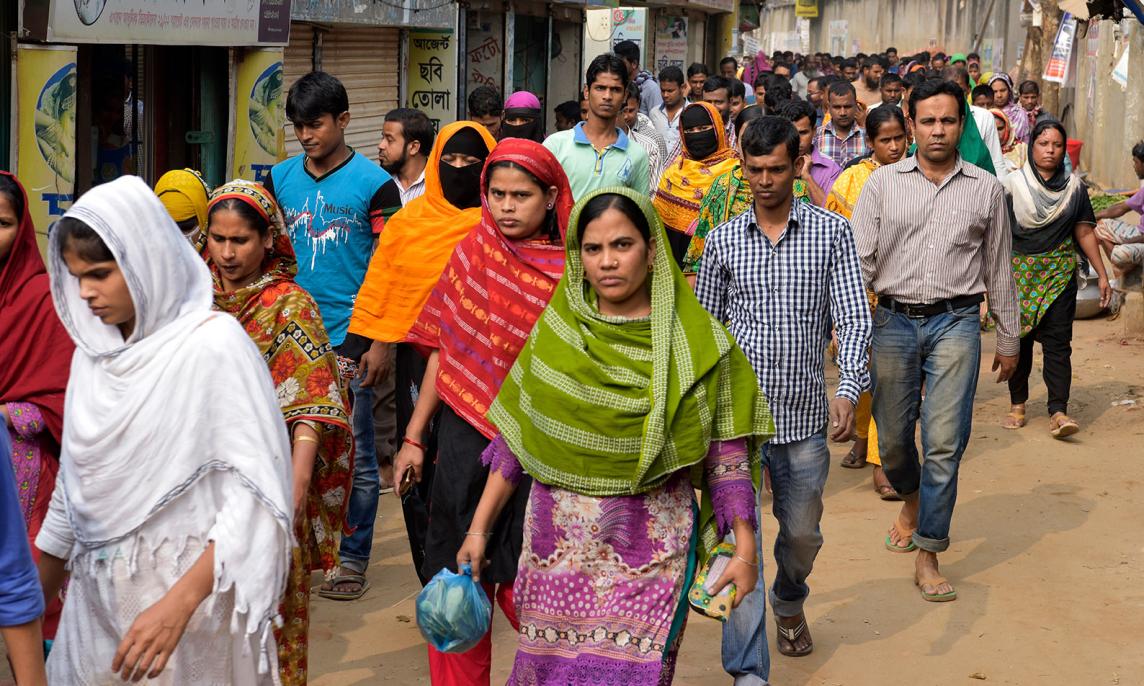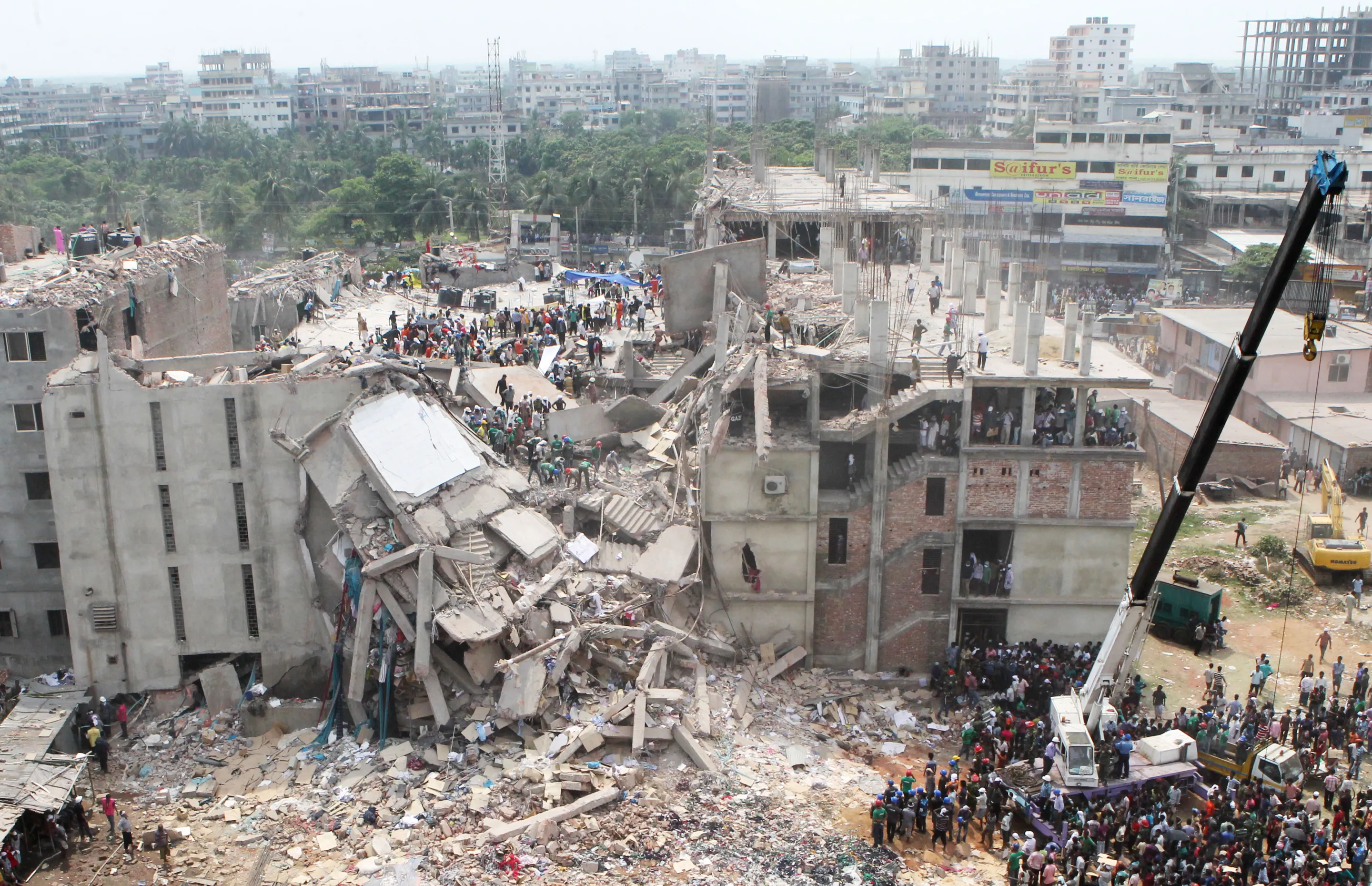
Sk Hasan Ali – shutterstock.com
Responsibility – following the Rana Plaza disaster
Since the collapse of the Rana Plaza textile factory, occupational safety in Bangladesh has improved – according to the results of a Foundation-funded study. But what will remain if the politicians don't keep at it?
"In the meantime, much has been learned about security issues, but the treatment of workers, especially women, is still looking bad", says a textile worker six years after the Rana Plaza disaster. On 24 April 2013, the eight-storey factory near the capital Dhaka in Bangladesh collapsed, burying 1,134 people. In a collaborative effort, an international and interdisciplinary project alliance spent three years investigating how occupational safety and labor conditions in the country's clothing industry have changed since then and the regulatory approaches being pursued by politics, society and employers.
Importing companies have understood that they must be more careful about who they buy from.
Under the leadership of Elke Schüßler, Professor of Business Administration at the University of Linz (previously FU Berlin), five teams of researchers took a close look at the long supply chain – starting with the workers and managers employed at the textile factories in Bangladesh and extending to the brands and trading companies in Sweden, Great Britain, Germany and Australia. They also analyzed the local social environments and held talks with non-governmental organizations, trade unions, politicians and investors: "This gave us a comprehensive picture of how the political and social levels in the five countries – including Bangladesh – reacted to Rana Plaza," says Elke Schüßler.

The eight-story Rana Plaza building in Sabhar, Bangladesh housed several textile factories. When it collapsed on April 24, 2013, more than 1,000 people were killed - the worst accident to date in the international textile industry.
..."a certain degree of rethinking"
The main result of the "Garment Supply Chain Government" project is that Rana Plaza has brought about "a certain degree of rethinking" on the part of the importing companies: "They have understood that they must be more careful about who they buy from," says Elke Schüßler. The researchers surveyed the senior staff responsible for purchasing or ‘corporate responsibility' at 79 retail companies and brands. It was found that since the accident, many companies have been looking for ways beyond auditing to ensure greater transparency, more stable supplier relationships and higher standards of work safety in garment factories. However, significant differences remain.
In contrast to Germany and Sweden, for example, importers in Great Britain and Australia are making greater efforts to publish data on their suppliers and local production conditions. In all countries, though, only a few companies are trying to stop the downward spiral towards worsening labor conditions through collective action and closer cooperation with trade unions – so far with limited success. Apart from moral appeals, there are currently only isolated attempts to ensure greater sustainability in this area, the researchers note.
Promoting safety culture as a competitive advantage?
Some notable exceptions are the Accord of Fire and Building Safety for Bangladesh, which 56 percent of all companies surveyed have signed, the US Alliance for Occupational Safety in Bangladesh, and the global ‘ACT' agreement for living wages in the garment and textile sector. Moreover, the study shows that most companies have at least realized that they should seek to directly cooperate with producers over the longer term and reduce dependency on intermediaries.
... we have the safest garment industry in the world.
In a management survey of around 150 export-oriented factories, 80 percent spoke of a "new safety culture" after Rana Plaza. "This was a lesson to us. ‘Accord' and ‘Alliance' showed us how to improve and maintain certain standards," said one manager. Another described signing the new international agreements as a competitive advantage: "Because we Bangladeshi manufacturers can now say that we have the safest garment industry in the world."
However, it seems that especially small to medium-sized factories can hardly afford to implement the necessary safety measures within the time given. The producers criticize that they alone would have to bear the costs incurred by refurbishment or moving to more suitable factory buildings, and demand that responsibility for this be shared by the brands and retail chains. Otherwise, the researchers also warn, the high financial burden could trigger a process of concentration within the export-oriented industry, displacing small and medium-sized manufacturers. This is because factories remain under strong pressure to produce quickly and at low prices.
